Punishing: Gray Raven is a fast-paced action RPG where mastering combat mechanics is key. Understanding elements, status effects, and team synergies will help you perform better in challenging content like Warzone, Phantom Pain Cage, and story missions. So, this Punishing: Gray Raven combat guide breaks down what you need to know about elements and effects so you can optimize your team effectively.
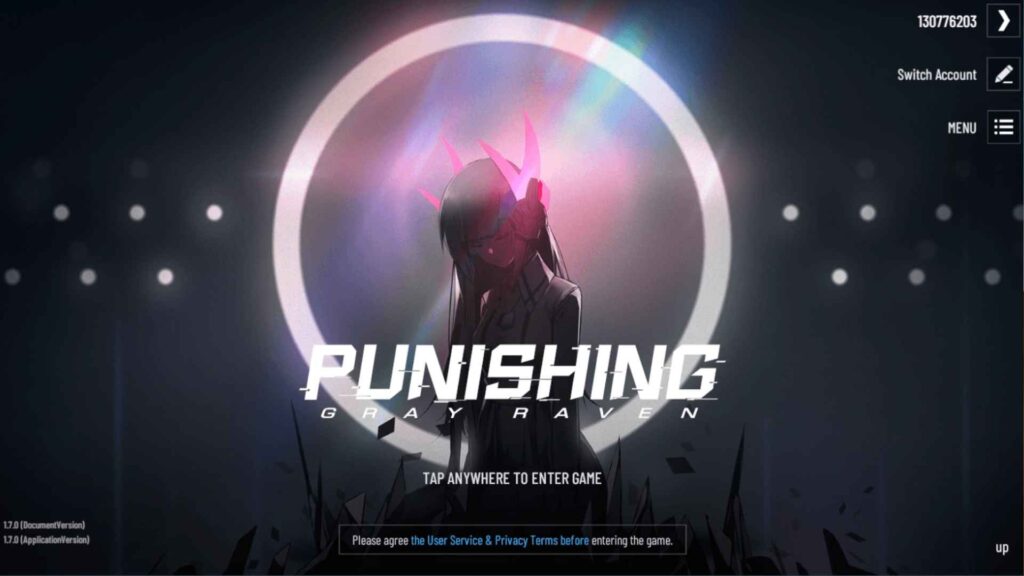
Don’t forget to top up Punishing: Gray Raven gameplay with Enjoygm as well. It is your safest, securest as well as the fastest way to top up your gameplay with discounted packs of rainbow cards as you want.
Understanding Elements in PGR
Elements determine the type of damage your Construct deals and how effective they are against certain enemies. This one is very important in the Punishing: Gray Raven combat play. Each Construct has one primary element, which shapes their skills, attacks, and synergies. The game features six core elements:
- Physical: Neutral damage with no elemental bonuses or penalties. Use Physical Constructs like Lucia: Plume are here for steady damage across most enemies.
- Fire: Deals burn damage over time and are strong against fire-weak enemies. Constructs like Karenina: Ember here excel in prolonged fights with sustained damage.
- Ice: Slows or freezes enemies to control crowds. Bianca: Veritas is great in this element for setting up combos and managing enemy movement.
- Lightning: Inflicts shock that can stun enemies and amplify damage. Lee: Entropy is effective here at disrupting enemy patterns with lightning attacks.
- Dark: Applies corrosion to reduce enemy defense. Kamui: Tenebrion is specialized here and uses dark damage to weaken tough opponents for faster kills.
- Light: A rarer element that bypasses some resistances or grants unique buffs. Constructs like Rosetta: Rigor specialize in here niche roles using light damage.
Elemental Advantages and Weaknesses
Next, when you are diving into the Punishing: Gray Raven combat, you have to pay attention to the advantages and weaknesses of enemies. Enemies in PGR have elemental resistances or weaknesses, visible on the pre-battle screen or via health bar indicators during combat.
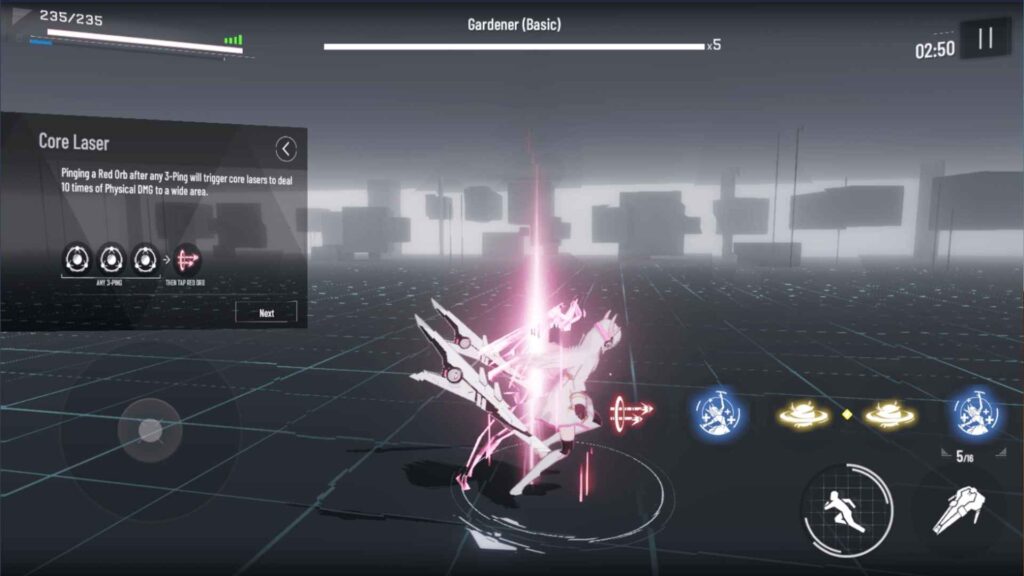
Using a Construct’s element against an enemy’s weakness (for example, fire against a fire-weak enemy) gives a damage bonus of around 20-30%. But remember, hitting an enemy with a resisted element can lower your damage output, so make sure to have the right team composition by your hands.
Always check enemy details in Warzone, Phantom Pain Cage, or other stages to ensure your team covers a range of elements for maximum efficiency.
Status Effects and Their Impact
Status effects are closely linked to elements and play a big role in how you approach the Punishing: Gray Raven combat. Skills, QTEs, and equipment like Memories can trigger these effects, giving you better advantages. Understanding them helps you control the battlefield and deal more damage.
- Burn (Fire): Inflicts damage over time and can stack. It’s perfect for gradually wearing down high-health enemies, especially bosses. For example, Karenina: Ember applies burn stacks that persist through combos, letting you keep pressure on tough foes.
- Freeze (Ice): Temporarily immobilizes enemies, stopping attacks and movement. Use freeze to interrupt enemy combos or create openings for heavy-hitting skills. Bianca: Veritas’ ultimate can freeze multiple enemies at once, giving your team room to unleash damage.
- Shock (Lightning): Stuns enemies briefly and increases damage they take from certain skills. Lee: Entropy can chain shock effects across groups of enemies, controlling the battlefield and setting up combos.
- Corrosion (Dark): Lowers enemy defense, making them take more damage from all sources. This is essential for tanky enemies or bosses. Kamui: Tenebrion’s dark abilities apply corrosion, letting your team deal significantly higher damage.
- Light Effects: Light-based Constructs often provide unique buffs or debuffs, such as enhanced healing for your team or increased damage to enemies..
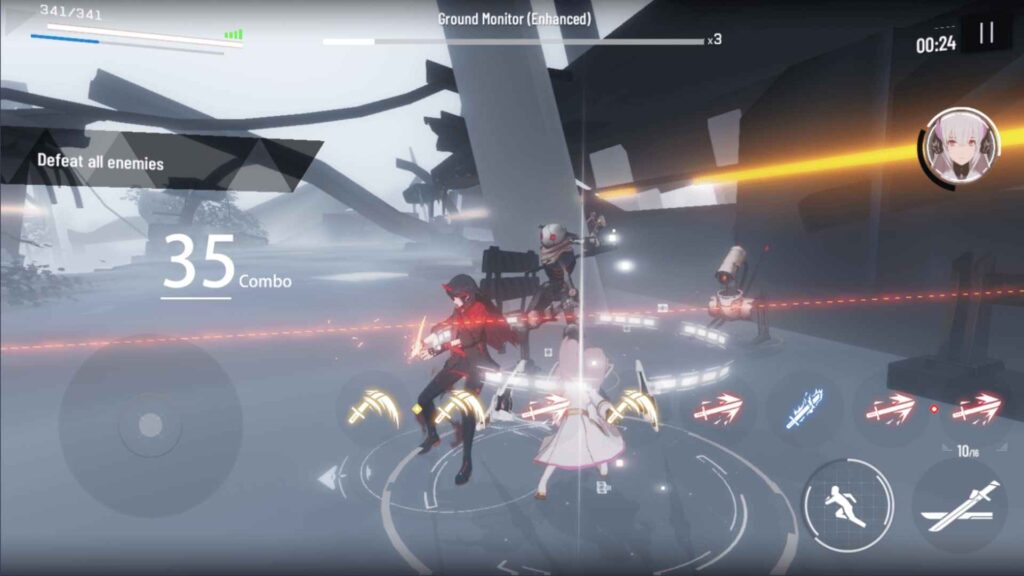
Managing Status Effects
Status effects last for a set duration but can be reapplied to maintain pressure on enemies. Some enemies, especially bosses, may resist certain effects like freeze, so you need to adapt your strategy accordingly.
For a better approach, you can try to equip Memories like Da Vinci or Guinevere to improve status effect application. For example, a 4-piece Da Vinci set increases QTE damage, which often triggers status effects more reliably.
Core Combat Mechanics Tied to Elements
To make the most of elemental damage and status effects, just try to integrate them with PGR’s core systems with the following methods.
Signal Orbs and the 3-Ping System
- Signal Orbs appear at the bottom-right of your screen during combat and are consumed to activate skills. They come in red, blue, and yellow.
- A 3-Ping happens when you use three orbs of the same color at once, triggering a powerful elemental skill. For example, using a 3-Ping with Lucia: Crimson Abyss (Physical) activates Blade Will Mode, enhancing attacks with elemental Sword Waves.
- Matching orb colors to a Construct’s element boosts damage and increases the chances of triggering status effects. For instance, using blue orbs with Bianca: Veritas strengthens freeze applications.
Quick Time Events (QTEs)
QTEs are a key part of Punishing: Gray Raven’s combat, letting off-field Constructs join the battle with powerful elemental attacks. They trigger when a 3-Ping matches the color assigned to an off-field Construct during your pre-battle setup.
- When a QTE activates, the off-field Construct enters the fight with full damage immunity, delivering an elemental attack or status effect. For example, Karenina: Ember’s QTE applies burn stacks to enemies, keeping pressure consistent.
- Equipping a 4-piece Da Vinci Memory set on off-field Constructs allows both to trigger QTEs simultaneously, amplifying elemental damage and status effects across your team.
Core Passives and Ultimates
- Core Passives: Every Construct has a unique passive that boosts elemental performance under certain conditions, such as landing a 3-Ping or dodging enemy attacks. Kamui: Tenebrion, for instance, increases dark damage and corrosion application whenever conditions are met.
- Ultimates: High-damage skills tied to elements, ultimates often apply or enhance status effects. Timing your ultimate after a status effect (like corrosion) can dramatically increase overall damage output.
Supercomputing Space
Supercomputing Space activates when your energy gauge fills through attacks or orb usage, slowing down time for a short duration. This allows you to chain elemental skills and QTEs without interruption, perfect for stacking burn, corrosion, or other effects while minimizing enemy retaliation.
Team Building and Elemental Synergy
Creating a well-balanced team is crucial for handling PGR’s toughest content. So, focus on complementary elements and effects for maximum efficiency:
So here are the key factors to consider when you are building your team:
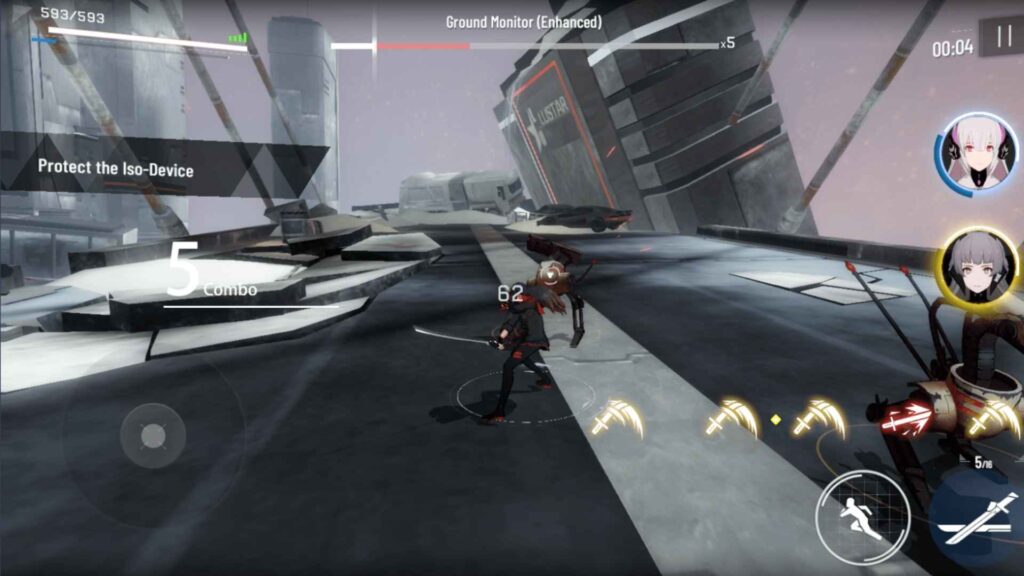
- Roles: Typical teams include a DPS (Attacker), Tank, and Support. Assign elements strategically to exploit enemy weaknesses.
- Example: Pair Lucia: Plume (Physical DPS) with Bianca: Veritas (Ice Support) and Kamui: Tenebrion (Dark Tank) to cover multiple elemental strengths and status effects.
- QTE Synergy: During pre-battle setup, assign orb colors to ensure QTEs trigger often. For example, set a fire Construct to red orbs and an ice Construct to blue orbs to diversify elemental QTE effects.
- Memory Sets: Equip Memories that boost elemental damage or enhance status effects. A 6-piece Guinevere set strengthens ice attacks, while a 6-piece Cottie set increases fire damage.
- Omniframes: Some Constructs, like Rosetta: Rigor (Light), have Omniframe versions that provide team-wide buffs or elemental amplification. Always check skill descriptions to maximize synergy.
Note: If you are looking for more power ups for your team, just make sure to go with top up packages from Enjoygm. As a live application top up service, it is your most affordable method to buy rainbow cards in Punishing Gray Raven for more power ups in a securest environment.
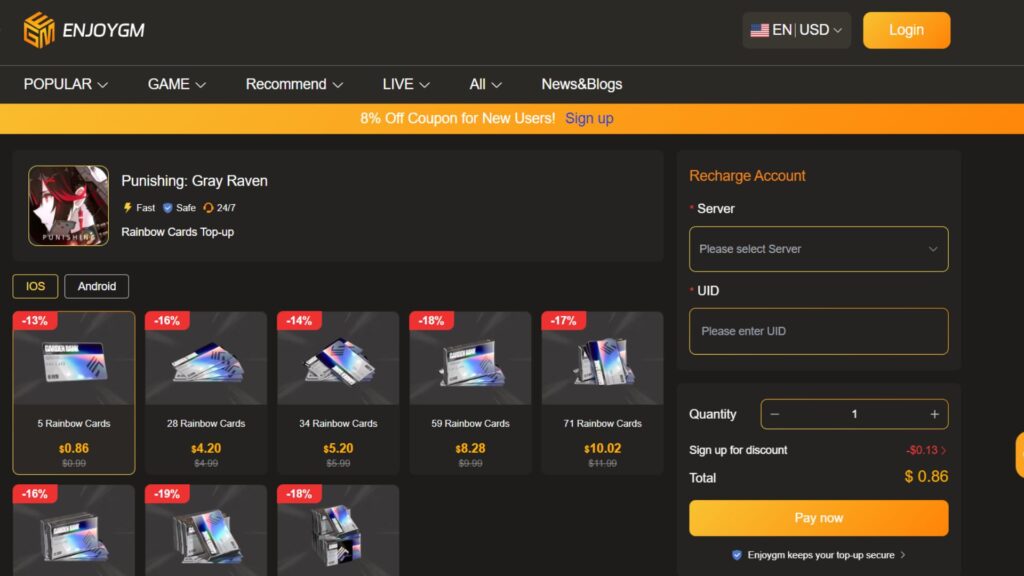
Advanced Punishing: Gray Raven Combat Tips for Elements and Effects
- Elemental Prioritization: Always check enemy weaknesses before entering a stage. Use the Codex or stage information to identify the best Constructs for the fight. Targeting the right element early can make battles far easier.
- Status Stacking: Apply burn, corrosion, freeze, or shock effects at the start of combat to maximize damage over time. Refresh these effects with QTEs and ultimates for consistent pressure.
- Dodge and Counter: Dodging enemy attacks generates orbs and triggers the Matrix slow-motion state, allowing you to land precise elemental skills and chain combos effectively.
- Memory Optimization: Equip 4-piece or 6-piece Memory sets that enhance your Construct’s element. For instance, a 4-piece Da Vinci set on a support Construct increases QTE elemental damage.
- Adapt to Enemy Immunities: Bosses may resist certain effects, like freeze. If an effect isn’t working, swap to a different element or focus on raw damage to maintain efficiency.
- Practice Combos: Chain 3-Pings, QTEs, and ultimates to maintain continuous elemental pressure. Example: use Lee: Entropy’s 3-Ping to apply shock, then trigger a QTE from a fire Construct to layer burn damage.
Conclusion
And that is it, Mastering elements and status effects are what allows you to do your best in the Punishing: Gray Raven combat play. Try to use our tips and guidance to make yourself better in these stages so you are no longer going to suffer in battles. So, are you ready?